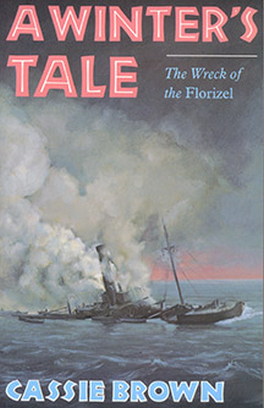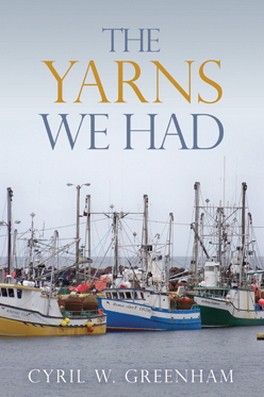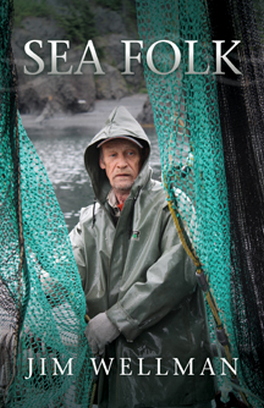Thought by many to be rare, or unprecedented events, avalanches occur in Newfoundland and Labrador, and often with devastating results. This book builds a picture of how avalanches have affected the people of Newfoundland and Labrador through describing the various avalanche tragedies that have occurred in the last 250 years. Where possible, the words of those present as reported in contemporary accounts are used to describe the incidents; and in a few cases the direct accounts of survivors are used. The stories told are often tragic- with over sixty people killed in avalanche incidents, this is unavoidable-but also many survive, and lessons can be learned from their experiences. The aim of this publication is to raise awareness of avalanche hazards in Newfoundland and Labrador, and in addition to detailing the various incidents, some basic information on causes of avalanches, and avalanche safety is included. The best way of understanding the significance of avalanches in this province, however, is by listening to the stories told over the years. Proceeds from the sale of this book will help support the activities of the Canadian Avalanche Foundation/Fondation Canadienne des Avalanches.
In 1959, five people were killed in the worst geological disaster in St. John’s history. A ferocious storm hit the city on the night of February 16, with winds reported up to 135 miles per hour, and with heavy snowfall.
Sixteen-year-old Shirley Noseworthy had been skating with her friend Ruth Wells at Memorial Stadium when the storm hit. The streets were in terrible condition and it was clear that she would not be able to get back to her home in the West End of St. John’s. Ruth offered her shelter for the night, and they walked through the storm to Ruth’s house in the Outer Battery, where Shirley bedded down for the night on the couch in the front room.
At 1:05 a.m. residents in the Outer Battery heard a sound “louder than a clap of thunder.” An initial avalanche buried the house belonging to the Garland family, and seconds later a second avalanche struck two houses, sweeping them downslope and into the rear of two other houses. The two houses struck belonged to the families of Clarence Wells (Ruth’s father), and Jim Piercey, and contained fourteen people. Clarence Wells was the nephew of Alfred Wells, whose family was hit by the 1921 avalanche. The top storey of the Piercey house was ripped off, and the Wells house completely demolished.
Rescuers were on the scene almost immediately, and worked furiously over the next twelve hours despite appalling weather conditions. Over fifty Battery residents, coordinated by the efforts of local resident Raymond Riche, dug through the debris, and quickly rescued Clarence Wells, his wife and child, and three children of the Piercey family. One of the three Piercey children (a two-year-old girl) was swept 200 feet downslope and was rescued by Ralph Barnes, who had heard the noise of the avalanche, and saw her through his window, almost completely buried on a fish flake. Charlie and Carl Piercey were dug out by rescuers after being buried for ninety minutes.
Ruth Wells described her experience to St. John’s Woman (magazine) in May 1964. She had just come downstairs to retrieve a sweater from the back of a kitchen chair by the fireside. She exchanged a word with Shirley who was lying on the couch, but then the avalanche struck. Ruth was buried with the kitchen stove lying across her leg, but with her face kept clear of snow by the kitchen chair that had ended up protecting her. Ruth was able to move her upper body, and used a piece of the chair to try and dig herself free. Nearly two hours after the avalanche had hit, she heard the voices of rescuers. She shouted out to them, and soon they broke through the snow to reach her. One leg, however, was still trapped, and piles of debris and snow above her made it dangerous for the rescue party (which included her father) to do much to help her. Ruth carried on digging and was able to free herself. It was only after she was extracted from the debris that she realized that her right leg and left knee were badly burned by contact with the stove.
Over the next few hours, the searchers uncovered the bodies of Mr. and Mrs. Piercey, and Mrs. Vincent, Jim Piercey’s mother, and rescued Isaiah Dawe (living in the Wells house), who had attained the age of 100 a few months before. Gloria Piercey and Mrs. Vincent had been sharing the same bed, but Gloria was thrown clear, whereas Mrs. Vincent was buried and suffocated. Mr. Dawe later died in hospital, reportedly of shock. Shirley Noseworthy, and Ruth’s nineteen-year-old brother, Ted, were still missing.
It was Shirley’s first visit to the Battery (and she did not return until thirty-five years later, as part of a television program marking the anniversary of the avalanche). Shirley was buried for ten hours before rescuers heard her cries for help. She was pulled from the debris, showing remarkable courage throughout. She was badly frostbitten on her right leg, but after three weeks of hospital treatment, recovered fully. She was placed in the same ward as her friend Ruth, who also recovered well from her burn injuries. After twelve hours, the body of Ted Wells was recovered and taken to Devon House along with those of the other victims. He had been killed, apparently instantly, struck by a beam when the house collapsed.
Margaret Wells contacted me after seeing a newspaper article about our research on avalanches in Newfoundland; she described her experience as “a night of horror.” Her house stood adjacent to the Piercey and Wells houses that were completely destroyed, and when the avalanche struck, snow stove in the window at the rear of the house, filling the kitchen. The telephone and electrical lines were still functioning, but the police and other authorities were unable to get to the Battery. Mrs. Wells had three children and was pregnant with her fourth. She walked to safety through deep snow and in appalling weather with the aid of friends and neighbours. She was reluctant to return to the house later that year, but had little choice, as no alternative housing was available.
There were eleven members of the Garland family who had gathered in the house of Cyril Garland for shelter. The house was buried by the first avalanche, and they were trapped until dug out by rescuers. Fortunately, the house was able to withstand the weight of the snow, and no injuries occurred.
The residents of the Outer Battery were evacuated during the day and found temporary housing by the Red Cross. At the time there was a belief among the residents that this would be a permanent move. A Battery resident, interviewed by the Evening Telegram, said, “This place may become a ghost town now. It appears to be the end of the Outer Battery for winter living.” Another resident commented, “My wife tells me we won’t be living here anymore.” However, Raymond Riche, the hero of the rescue attempts, firmly stated that people would move back, because, as fishermen, this was their place of work. In follow-up stories in the Evening Telegram, Alex Wells, whose house lay below the Pierceys’, was interviewed. He is quoted as saying, “What a night . . . we were frightened . . . all of us were . . . about what had happened . . . and we didn’t know what else would happen . . . never again please. . . .” The Evening Telegram also devoted an editorial column to the disaster:
Many people are beginning to have some second thoughts on the appalling prospect of half a dozen people being killed and their homes destroyed by an avalanche almost in the centre of the capital city of this province. They have a right to wonder what steps will be taken to prevent a recurrence of such a tragedy.
(Evening Telegram editorial, February 26, 1959)
Environment Canada weather records show that fifty-five centimetres of snow fell on the night of February 17. There had been several big snowfalls in January, with seventy centimetres of snow lying on the ground. There had been little snow in February, however, and temperatures had been very low between February 6–14, falling to -15 degrees Celsius and below. These were ideal conditions for the formation of surface hoar. This would form a weak layer in the snowpack when buried by the storm of February 17, making avalanche danger high.
Since the 1959 avalanche no serious incidents have occurred in the Battery, although minor rockfall and avalanches have been reported by residents.
[A] simple and captivating book. . .-- The Telegram --
Aside from survivor stories, photographs and other incident details, Liverman provides us with the anatomy of an avalanche, safety tips and other important information for anyone venturing into snowy regions.-- Downhome --
[Liverman\\\'s] book is an organized, historical recounting of avalanche disasters that have taken place throughout our province in the last 230 years, from 1781 to 2006, and it’s a fascinating read.-- The Western Star --



















